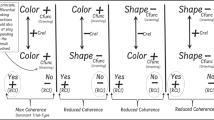Abstract
The text Jié tuō dào lùn, or Chinese translation of *Vimuttimagga mentions the Avīci Hell all of a sudden in the section on the cognitive process. The problematic phrase wújiān shēng Āpídìyù (無間生阿毘地獄) has been interpreted in different ways by several scholars. Japanese scholars tend to skip the phrase, or regard the term Āpídìyù as a typographic error. Given that we do not have an original text, however, the phrase needs to be understood as it is. In contrast, the English translation interprets the term wújiān as a name of hell, and considers it as a synonym of Āpídìyù, namely the Avīci Hell. Even though the Chinese term wújiān itself is usually understood as the Avīci Hell, namely, Wújiāndìyù or Āpídìyù, of which the corresponding Pāli is Avīci-niraya, it is not the case here since a hell as such has nothing to do with the cognitive process. Assuming that the term Āpídìyù is not a typographic error, I propose to understand this problematic phrase as the simile in the sentence ‘seven mind-moments [immediately proceed just as one who has performed] the Five Sins is reborn into the Avīci Hell [as soon as (s)he dies]’. The term wújiān meaning ‘no-gap’ in the cognitive process section conveys that there is not any intermission between the successive mind-moments. In Pāli perspectives, it implies that the successive mind-moments are in the proximity condition (anantara-paccaya). The Jié tuō dào lùn was likely to use a metaphor in order to set a rule for governing the cognitive process rather than making a specific technical term.
Similar content being viewed by others
Bibliography
Primary Sources [Chinese]
T14 no.468 Wén shū shī lì wèn jīng (文殊師利問經).
T16 no.659 Dà chéng băo yún jīng (大乘寶雲經).
T32 no.1648 *Vimuttimagga; Jiĕ tuō dào lùn (解脫道論).
T37 no.1763 Dà bā niè pán jīng jí jiě (大般涅槃經集解).
T45 no.1909 Cí bēi dào chăng chàn fă zhuàn (慈悲道場懺法傳).
T53 no.2121 Jīng lǜ yì xiàng (經律異相).
Primary Sources [Sanskrit and Pāli]
Abhidharmakośabhāṣya. (1975). ed. by P. Pradhan. Patna: Kashi Prasad Jayaswal Research Institute.
Kathāvatthu. (1979). ed. by Arnold C. Taylor, London: The Pali Text Society.
Tikapaṭṭhāna. (1988). ed. by. Mrs. Rhys Davids, London: The Pali Text Society.
Vibhaṅga. (1978). ed. by Mts. Rhys Davids, London: The Pali Text Society.
Visuddhimagga. (1950). ed. by H.C. Warren, revised D. Kosambi. Cambridge, Massachusetts, London: Harvard Oriental Studies.
Sammohavinodanī. (1980). ed. by A.P. Buddhadatta Thero. London: The Pali Text Society.
Secondary Sources
Anālayo, B. (2009). “Vimuttimagga”. Encyclopaedia of Buddhism, W.G. Weeraratne (ed.). Sri Lanka, vol. 8 no. 3.
Bapat, P. V. (1937). Vimuttimagga and Visuddhimagga. Calcutta: Calcutta Oriental Press.
Bodhi, B. (2010). A Comprehensive Manual of Abhidhamma. Kandy: BPS.
Cousins, L.S. (2010). Tambapaṇṇiya and Tāmraśāṭiya. Unpublished paper available at: http://www.ocbs. org/images/fellows/lancearticle1.pdf.
Cousins, L.S. (2012). The teachings of the Abhayagiri School. In Peter Skilling, Jason A. Carbine, Claudio Cicuzza, & Santi Pakdeekham (Eds.), How Theravāda is Theravāda? Exploring Buddhist identities (pp. 67–127). Chiang Mai: Silkworm Books.
Crosby, K. (1999). History versus modern myth: The Abhayagirivihāra, The Vimuttimagga and Yogāvacara Meditation. Journal of Indian Philosophy, 27(6), 503–550.
Ehara, N. R. M., Soma, T., & Kheminda, T. (1961). The Path of Freedom by Arahant Upatissa. Colombo.
Hikata, R. (干潟龍祥). (1978[1933]). Kokuyaku Issaikyō (国訳一切経). Tokyo: 大東出版社.
Hirakawa, A. (1973). Index to the Abhidharmakośabhāṣya (Taisho Edition). Part one. Chinese-Sanskrit. Tokyo: Daizo Shuppan Kabushikikaisha.
Hirakawa, A. (1977). Index to the Abhidharmakośabhāṣya (Taisho Edition). Part two. Chinese-Sanskrit. Tokyo: Daizo Shuppan Kabushikikaisha.
Karunadasa, Y. (2010). The Theravāda Abhidhamma: its inquiry into the nature of conditioned reality. Hong Kong: Centre of Buddhist Studies HKU.
Kim, K. (2015a). A mysterious scripture from Tāmraparṇīya (赤銅鍱): Hermeneutical strategy on some Chinese terms in *Vimuttimagga (1). International Journal of Buddhist Thought & Culture, 25, 49–81.
Kim, K. (2015b). Observations on some technical terms in the *Vimuttimagga and their English Translation: An examination of jiā (夾) and visayappavatti (Forthcoming).
Kim, W. (1999). The Theravādin Doctrine of Momentariness. Thesis: DPhil. University of Oxford.
Kyaw, P. P. (2013). Paṭṭhāna (Conditional Relations) in Burmese Buddhism. Thesis: DPhil. King’s College London.
Lamotte, É. (1988). History of Indian Buddhism (S. Webb-Boin, Trans). Louvain: Peeters Press.
Mizuno, K. (水野弘元). (1978[1964]). Bukkyo no Shinshikiron (パーリ仏教を中心とした仏教の心識論). Tokyo: Pitaka (ピタ力).
Ñāṇamoli, B. (1979). The path of purification (Visuddhimagga). Kandy: Buddhist Publication Society.
Ñāṇamoli, B. (1987). The dispeller of delusion (Sammohavinodanī). Part I. London: Pali Text Society.
Naniwa, S. (浪花宣明). (2001). Shin Kokuyaku Daizōkyō (新国訳大蔵経). Ronshū-bu (論集部) 5. Tokyo: 大藏出版.
Norman, K. R. (1993[1991]). The literary works of the Abhayagirivihārins. In Collected Papers IV (pp. 202-217). Oxford: The Pali Text Society.
Pruden, L. M. (1988). English Trans. Abhidharmakośabhāṣya, Berkely, California: Asian Humanities Press.
Skilling, P. (1994). Vimuttimagga and Abhayagiri: The form-aggregate according to the Saṃskṛtāsaṃskṛta-Viniścaya. Journal of the Pali Text Society, XX, 49–210.
Wijeratne, R. P., & Gethin, R. (2002). Summary of the topics of Abhidhamma. Oxford: The Pali Text Society.
Author information
Authors and Affiliations
Corresponding author
Rights and permissions
About this article
Cite this article
Kim, K. Avīci Hell and wújiān (無間) in the Cognitive Process: Observations on Some Technical Terms in the Jié tuō dào lùn (*Vimuttimagga). J Indian Philos 44, 939–956 (2016). https://doi.org/10.1007/s10781-015-9287-2
Published:
Issue Date:
DOI: https://doi.org/10.1007/s10781-015-9287-2



